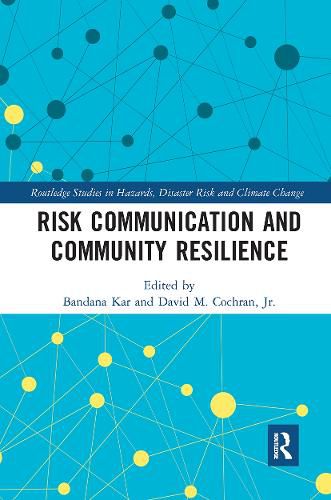Readings Newsletter
Become a Readings Member to make your shopping experience even easier.
Sign in or sign up for free!
You’re not far away from qualifying for FREE standard shipping within Australia
You’ve qualified for FREE standard shipping within Australia
The cart is loading…






Risk communication is crucial to building community resilience and reducing risk from extreme events.
True community resilience involves accurate and timely dissemination of risk information to stakeholders. This book examines the policy and science of risk communication in the digital era. Themes include public awareness of risk and public participation in risk communication and resilience building. The first half of the book focuses on conceptual frameworks, components, and the role of citizens in risk communication. The second half examines the role of risk communication in resilience building and provides an overview of some of its challenges in the era of social media. This book looks at the effectiveness of risk communication in socially and culturally diverse communities in the developed and developing world.
The interdisciplinary approach bridges academic research and applied policy action. Contributions from Latin America and Asia provide insight into global risk communication at a time when digital technologies have rapidly transformed conventional communication approaches. This book will be of critical interest to policy makers, academicians, and researchers, and will be a valuable reference source for university courses that focus on emergency management, risk communication, and resilience.
$9.00 standard shipping within Australia
FREE standard shipping within Australia for orders over $100.00
Express & International shipping calculated at checkout
Risk communication is crucial to building community resilience and reducing risk from extreme events.
True community resilience involves accurate and timely dissemination of risk information to stakeholders. This book examines the policy and science of risk communication in the digital era. Themes include public awareness of risk and public participation in risk communication and resilience building. The first half of the book focuses on conceptual frameworks, components, and the role of citizens in risk communication. The second half examines the role of risk communication in resilience building and provides an overview of some of its challenges in the era of social media. This book looks at the effectiveness of risk communication in socially and culturally diverse communities in the developed and developing world.
The interdisciplinary approach bridges academic research and applied policy action. Contributions from Latin America and Asia provide insight into global risk communication at a time when digital technologies have rapidly transformed conventional communication approaches. This book will be of critical interest to policy makers, academicians, and researchers, and will be a valuable reference source for university courses that focus on emergency management, risk communication, and resilience.